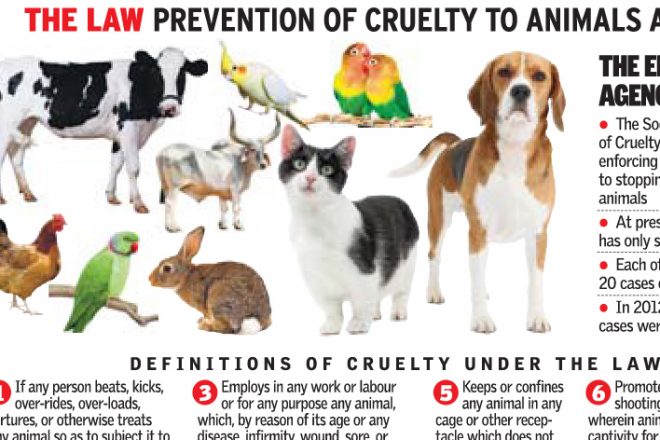Animal cruelty is a pervasive issue that manifests in various forms, affecting countless creatures across the globe. Its prevalence is often staggering and alarming, revealing a disturbing truth about societal values regarding the treatment of animals. Understanding the extent of animal cruelty requires delving into statistics, examining cultural influences, and exploring the psychological underpinnings that contribute to this grave problem.
Globally, animal cruelty statistics offer a disquieting glimpse into the extent of this issue. According to numerous studies, millions of animals undergo neglect, abuse, or exploitation each year. Whether it is through direct physical harm, neglecting basic needs, or exploitation in industries such as entertainment and fashion, the manifestations of cruelty are hideously varied. For instance, in the domestic realm, neglect may appear as failure to provide adequate nourishment or medical care, which is a widespread form of abuse seen in many households. The sadness of abandonment and the tragic consequence of euthanasia in overcrowded shelters poignantly illustrate the horrifying realities animals face.
Moreover, animal cruelty extends beyond the confines of domestic settings. The agriculture industry has long been critiqued for inhumane practices that prioritize profit over the welfare of livestock. Factory farming presents a grim reality where animals are often confined in deplorable conditions, subjected to physical mutilation, and deprived of natural behaviors. Furthermore, practices such as puppy mills and exotic animal trade exacerbate the suffering endured by countless animals, as they are often taken from their natural environments, leading to physical and psychological trauma.
Despite the chilling statistics, the question remains: why does animal cruelty persist? Several factors converge to create a complex tapestry of influences that contribute to the normalization of such inhumane behavior. Cultural attitudes play a significant role in shaping beliefs about animals. In some societies, animals are viewed merely as commodities, their value measured solely by their utility to humans. This perspective can lead to desensitization towards animal suffering, perpetuating a cycle of cruelty.
Additionally, media representation contributes to this phenomenon. Popular culture often romanticizes violence, including against animals. Cinematic portrayals of animal abuse can elicit paradoxical reactions—while viewers may express outrage, the depiction itself can still desensitize the audience to actual cases of cruelty. The consumption of violent media can create a disconnection from the realities of suffering that animals endure, further enabling an apathetic attitude towards animal rights.
Sociological insights provide additional layers of understanding. Individuals who perpetrate acts of cruelty often exhibit patterns of behavior and psychological traits linked to underlying issues, such as feelings of powerlessness or personal trauma. Research identifies a correlation between animal abuse and later violent behavior towards humans, suggesting that individuals who harm animals may be grappling with unresolved psychological or social issues. This interplay underscores a disturbing cycle wherein the abuse of animals is both a cause and a consequence of deeper societal problems.
Prevention of animal cruelty necessitates a multifaceted approach. Advocacy groups and public awareness campaigns play a critical role in educating the public about animal welfare. These organizations work tirelessly to highlight the plight of abused animals and promote compassionate treatment. Legislative measures are also vital, as animals often lack adequate legal protection. Strengthening animal welfare laws can significantly reduce instances of cruelty by holding offenders accountable for their actions.
Education is paramount in fostering empathy towards animals. Teaching children about compassion and responsible pet ownership can shape future generations who value the lives of all creatures. Collaborative efforts between schools, communities, and animal welfare organizations can create a more informed and empathetic society. Community involvement can also bridge the gap between humans and animals, fostering connections that encourage kindness rather than cruelty.
The psychological ramifications of animal cruelty extend beyond the animals themselves; they permeate society at large. When individuals witness or perpetrate cruelty without intervention, it cultivates an environment of indifference towards suffering. The ethics surrounding animal treatment compel society to confront uncomfortable truths about its values and behaviors. Recognizing and addressing these concerns can lead to meaningful change regarding how animals are treated, enhancing the collective consciousness surrounding animal rights.
Lastly, the increasing awareness of animal welfare in recent years demonstrates a societal shift towards compassion. Movements advocating for veganism, humane farming practices, and the rescue of abused animals are gaining traction. This evolution in thought symbolizes a burgeoning recognition of the intrinsic value of all living beings and the imperative to safeguard their welfare. While the prevalence of animal cruelty may be shocking, the tides of change are beginning to surface, propelled by the collective efforts of activists, legislators, and the compassionate public.
In summary, the undercurrent of animal cruelty is a topic that merits critical examination. It reveals not only the suffering of countless innocent beings but also the sociocultural factors contributing to this distressing phenomenon. By cultivating awareness, fostering empathy, and advocating for systemic changes, society can work towards a future in which cruelty towards animals is no longer tolerated. Only then can the cycle of abuse be broken, leading to a world where all creatures are treated with respect and kindness.










